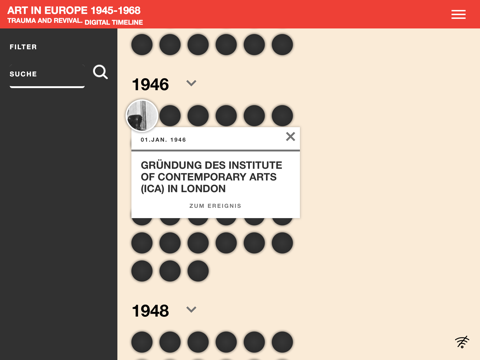
Europe 45-68 app for iPhone and iPad
Developer: ZKM Karlsruhe
First release : 02 Apr 2017
App size: 10.35 Mb
„Art in Europe 1945-1968“ generates a new narrative about Europe. The separation of Europe as a result of the Yalta Conference in 1945 and the resulting Cold War gravely impacted on both Eastern Europe and Western Europe. The fact that Western Europe accepted this separation until the fall of the Berlin Wall in 1989 amounts to auto-amputation. The project aims to retrospectively bring closer together what grew apart and became distanced during the time of divided Europe and thus further suture the gaping cultural wound that still exists between Eastern and Western Europe. The image of this »suture« itself can be documented multiple times in the artistic manifestations from the time between 1945 and 1968.
This reunification of Eastern and Western Europe, as put into place by the project in the name of art, not only closes a gap within art history. It should also be taken as an active pleading for Europe – to face the future. The exhibition contrasts the current economic and political accounts, which are propelling Europe towards the right and back into the former nationalism, with a committed, alternative narrative. It is the task of art to show alternatives and facilitate change.
The digital timeline is made up of two narrative lines: firstly, historic events from 1945 to 1968 (including the Yalta Conference, the construction of the Berlin Wall, the student movements of 1968 and the Prague Spring) and secondly, significant contemporary art exhibitions, artist manifestoes, campaigns, quotes, etc. The timeline is made up of historic photographs and documents, posters, books, objects and film material.


